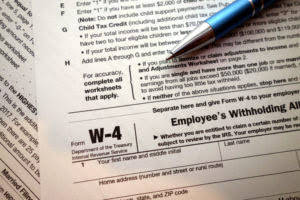Bookkeeping
How Do You Zero Out Opening Balance Equity In Quickbooks?
Content
- Clean Up Tips For The Opening Balance Equity Account In Quickbooks Online
- Open Balance Equity Definition
- Entering Opening Balance In Quickbooks
- How To Troubleshoot Quickbooks Error 7149?
- How To Calculate Price Earnings Ratio With Total Equity
- How Do You Find The Opening Balance Of Retained Earnings?
- What Is The Difference Between Opening Balance Equity And Retained Earnings?

It is really important to record opening balance in QuickBooks. When creating an account in your QuickBooks account, you can select a day in order to start tracking your transactions.
When you clear the balance in Opening Balance Equity and offset it to Retained Earnings, the data file setup is complete; the problem is that many QuickBooks users fail to take this step. QuickBooks allows you to access almost all types of accounts, including but not limited to savings account, checking account, credit card accounts, and money market accounts.
This will save all your details for the account depending on the type you are selecting. Thereafter, you can check the opening balance entry to ensure that the account register is accurate. After entering the opening balance, it is important to check the account register if it is accurate. Also, make sure that your Opening Balance Equity account should not have the remaining balance. This is the beginning stage of the opening balance of your account. Also, it helps you to summarize the past transaction that appeared before it. If you want to know more in detail how to record opening balance for bank account in QuickBooks, we will help you out.
To ensure that all your future reconciliation is accurate, you would be required to account for all the outstanding transactions in the credit card or bank. You can choose to use the Inventory Adjustment screen instead of entering the Inventory Asset Balance through a journal entry so that you can adjust both inventory quantity and value. Fixing Opening Balance Equity Account by Closing Opening Balance Equity to Retained Earnings The Opening Balance Equity account should have a zero balance once a file is set up correctly. After your file setup is complete, you should make the Opening Balance Equity account inactive. If you use the data file properly, there should never be a balance in Opening Balance Equity after you complete the data file setup.
Clean Up Tips For The Opening Balance Equity Account In Quickbooks Online
Then, you can enter the bank balance account for the day you select. Doing so, your QuickBooks matches the bank records from the beginning. Retained Earnings are listed on a balance sheet under the shareholder’s equity section at the end of each accounting period. To calculate Retained Earnings, the beginning Retained Earnings balance is added to the net income or loss and then dividend payouts are subtracted. The accounting cycle refers to the specific steps used to complete the accounting process and maintain an organization’s financial records.
- Retained earnings is the amount of net income left over for the business after it has paid out dividends to its shareholders.
- Thereafter, you can check the entry of the opening balance to make sure it is accurate.
- After that, apply the filters, select the fields, and then do the export.
- Now, reconcile the opening balance journal entry for each account through mini reconciliation, a process to do it.
- One of the important steps in the accounting cycle when preparing financial statements is the adjusted trial balance.
- They are equity transactions shown at the bottom of the Balance Sheet.
As soon as you enter a transaction, the button will change to Change Opening Balance button. These are the profits that have not been distributed among the company’s owners. QuickBooks also computes your profit or loss at the end of your fiscal year. Also, you must not enter the opening balance, if you do not have balance prior to the QuickBooks start date. The Opening Balance Equity Account is a common source of error for QuickBooks Users.
A common reason for a lingering balance on your opening balance equity account includes bank reconciliation adjustments that weren’t done properly, leaving an opening balance. When completing a bank reconciliation, ensure the bank statement balance transaction accounts for uncleared bank checks and other factors. One of the important steps in the accounting cycle when preparing financial statements is the adjusted trial balance. Discover more about the definition of the adjusted trial balance, including its preparation and the trial balance worksheet, and an example of this step in practice. Per journal entry, you can enter only one accounts payable or receivable transaction. Therefore, you need to have multiple journal entries to load the balances for these accounts. The Opening Balance Equity account is a clearing account created automatically by QuickBooks for use during data file setup.
These equity accounts are just labelled differently to represent the ownership or form of a business. If the amount of the journal accounting entry does not support the amount on your bank statement, and you close it out, the software will rearrange the opening balance equity account balance. Once the account entry process is completed for all accounts, compare the total opening balance equity to the sum of all beginning equity accounts listed in the prior account balances. If the balances match, then the initial entry of accounts was accurate. If not, then review the initial account balances entry to see if there was a data entry error. QB is double entry accounting, so for every entry there has to be an equal entry in a second account.
Open Balance Equity Definition
Assume an asset account, such as a checking account, with a balance of $100 is added to accounting software. Another account must be affected by $100 in order for your balance sheet to be balanced. The best practice is to close opening balance equity accounts off to retained earnings or owner’s equity accounts.
Otherwise, enter the amount in the “Increase” column to increase your equity. Now let’s change the transaction report to only show the various Expenses accounts. Before we go to the report section, let’s save the GnuCash data file . You should now have 3 accounts with opening balances set. From the menu and check to make sure you are in Basic Ledger style.
This account is needed when there are prior account balances that are initially being set up in Quickbooks. It is used to provide an offset to the other accounts so that the books are always balanced. Financial statements are prepared to know and evaluate the financial position of a business at a certain time. Learn about the adjusted trial balance, income statement, statement of retained earnings, and balance sheet, and explore the elements and steps in creating these financial statements. Once all initial account balances have been entered, the balance in the opening balance equity account is moved to the normal equity accounts, such as Owner’s Capital and Retained Earnings. Opening balances can be entered into the company file in the form of a General Journal Entry for most Balance Sheet accounts using Opening Balance Equity as the offset account.
Entering Opening Balance In Quickbooks
So, once you have entered all the account balances in QuickBooks, the opening equity is moved to common stocks or retained earnings i.e., normal equity. In the next section, we will discuss the process steps of deleting the opening balance equity into QuickBooks Online so that balance for deletion gets adjusted. Hi Jackie, in my experience, an adjusting journal entry is usually given from a CPA and has to do with the tax return and tying to books trial balance. When using this option, it creates adjusting entries on the “adjusted” column of the adjusted trial balance report. I would leave that unchecked and reserve that option for when your CPA gives you adjusting entries to post. Sorry for the delay Kenneth, for some reason your post was marked as spam. I am sure you have found out by now, you can create a journal entry for the balance in that account and move it to retained earnings.

Learn more about the definition of accumulated depreciation on an annualized basis and practice using the formula used to calculate it through examples. Owner’s equity represents the owner’s investment in the business minus the owner’s draws or withdrawals from the Opening Balance Equity business plus the net income since the business began. Dates you have entered for company started indicated the period tracing your financial transactions in QuickBooks. Here is the information about the How to Add, Enter or Edit Opening Balance in QuickBooks.
How To Troubleshoot Quickbooks Error 7149?
• To provide a common register so you can easily view your opening entries before “closing” to the Retained … Locate the account, then go to the Action column and select View register.
- So what is it, and why is it showing up on your balance sheet?
- The opening balance of owners equity can be found by looking at the closing balance from the previous year.
- You can also click on the “View sample file” to go to the Dancing Numbers sample file.
- Opening Balance is basically the amount of money’s company account at the beginning of a new financial period in a year.
- Each of these products has an automated conversion tool available free from Intuit that eliminates the need to make startup transactions if the data is converted and not just lists.
- Above all that, before getting started with a QuickBooks account, it is important to create an opening balance.
If a customer has paid for any goods or services from the business in advance or hasn’t received them yet, then enter the undelivered value here. Use the dropdown to manage when you believe that these goods or services will be delivered. Unlike the Retained Earnings account, the Opening Balance Equity account does have an account register. Then double click each posting and make the corrections here. Leave this field blank when entering Customers, Vendors and Accounts.
How To Calculate Price Earnings Ratio With Total Equity
Use the dropdown options to manage which month these assets impact the Cash Flow. If the business is owed any cash at the start of the plan, enter this here. Leaving the dropdown as ‘Before month start’ will cause the cash amount to be paid to you immediately at the start of the plan . If you wish to delay the payment of this cash, use the dropdown to choose a different month. You’ll then see this amount appear in your cash flow forecast.

This image shows the ending balances after Chapter 4, Transactions. Change the date to your start date in the Account Quick Report. If you don’t know the exact start date, then you can choose ALL in the Dates drop-down. Now, for each account, you shall repeat the steps 3 and 4. Verify that the Opening Balance Equity Account is now Zero by either a Transaction Detail Report for the account or QuickZoom to the account’s register from the Chart of Accounts.
How Do You Find The Opening Balance Of Retained Earnings?
Adjusting entries are done at the end of a cycle in accounting in order to update financial accounts. Study the definition, examples, and types of accounts adjusted such as prepaid and accrued expenses, and unearned and accrued revenues. Adjusting entries are made at the end of the accounting period to close the temporary accounts and transfer the balance of the temporary accounts to the permanent accounts. Equity is owner’s equity or basically the net change in capital contributions or withdrawals by owners.
Can You Advise Me Regarding The Process Of Changing The Opening Balance On The Bank Account Register In Quickbooks Online?
Also about the credit card balance its a negative so the Open Balance Equity will always have a negative balance because of the credit card opening balance. It is used to provide an offset to the other accounts, so that the books are always balanced. To enter the balance for accounts payable, accounts receivables, and sales tax payable create an additional journal entries. You can also enter any other account that is not included on the first journal entry. If the journal accounting entry amount doesn’t match your bank statement, and you close it out, then the software will adjust the https://www.bookstime.com/ account balance.
Where Does The Beginning Balance Of Retained Earnings Come From?
Opening Balance Equity– This account gets posted to when you create a new chart of account for a loan or item that you enter a opening balance for in the set up of the account in QuickBooks. This account should be closed out to retained earnings and not carry a balance. The company had transactions prior to the QuickBooks start date (i.e., it is not a new business). If it is a new business with no prior transactions, then simply begin entering typical QuickBooks transactions with no need for unusual start up entries. In this case, it’s most probably the open balance equity account.
If the business owes any cash at the start of the plan, enter this here. Leaving the dropdown as ‘no delay’ will cause the cash to be paid immediately at the start of the plan . If you wish to delay the payment of this cash, set up a delay. The cash movement will appear on your cash flow after the delay set. QuickBooks uses the Opening Balance Equity account automatically as the offset when entering a new Customer, a new Vendor or a new Account balance. This often occurs when clients set up their own QuickBooks files. Entering beginning balances in the screen for setting up a new Customer, Vendor or Account is not the proper method of setting up beginning balances.
